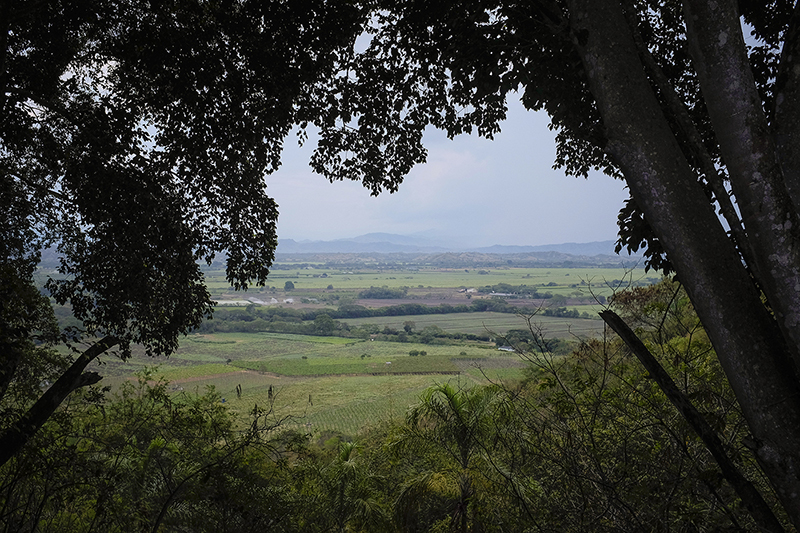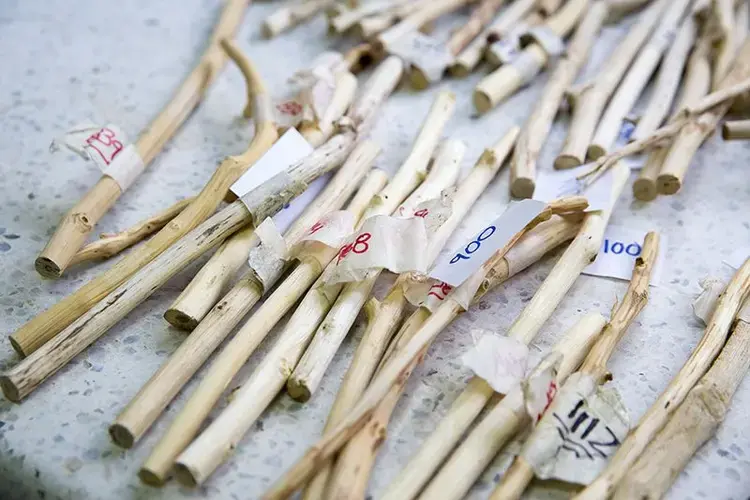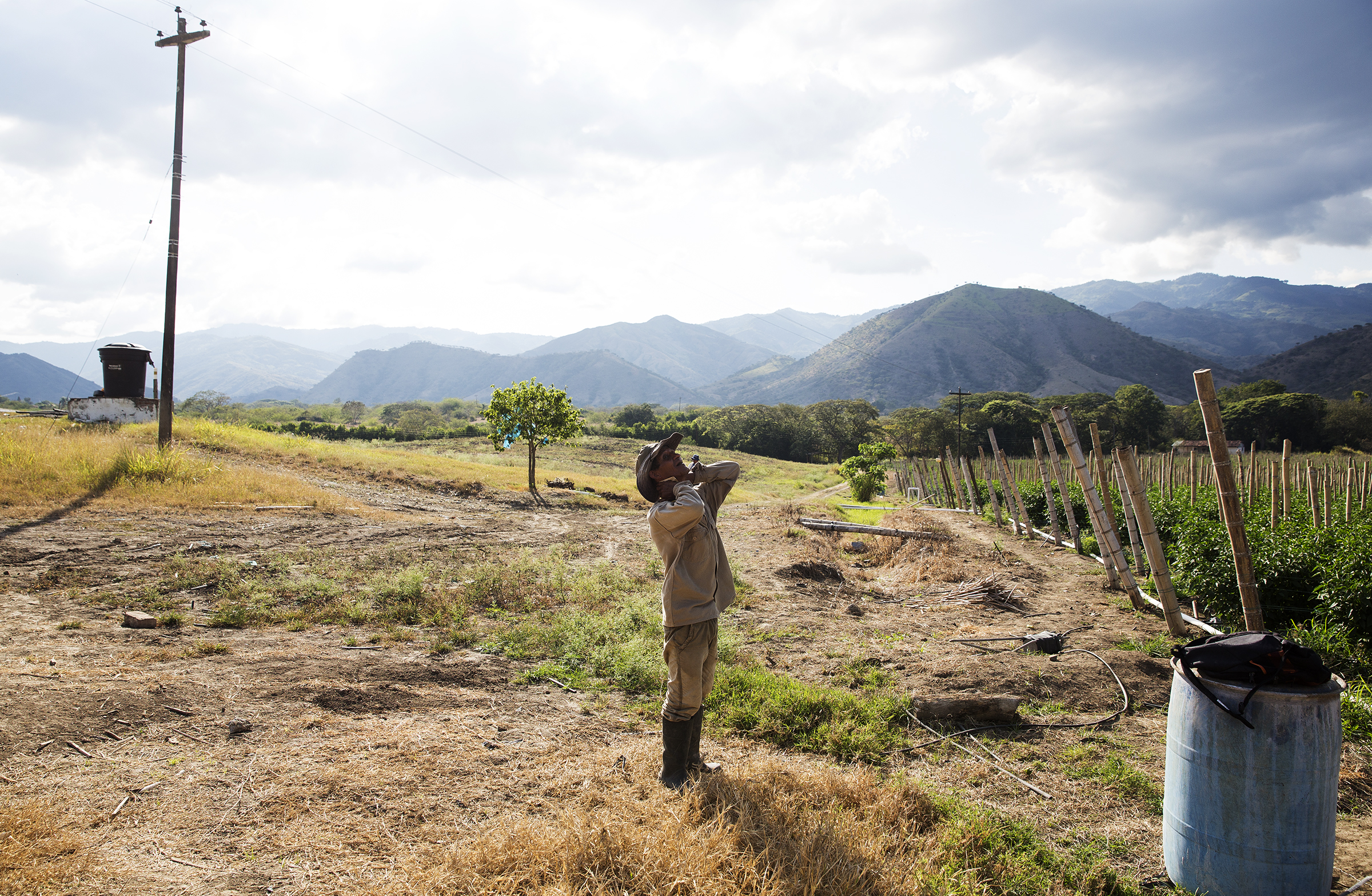
When the government of Colombia and the left-wing guerrilla group Revolutionary Armed Forces of Colombia (FARC) signed an agreement in 2016 to end five decades of conflict, the world celebrated. But that hard-won peace has come with a hidden cost.
FARC guerrillas once occupied large swathes of Colombia’s vast forests, including the Colombian Amazon. The fighters’ presence sent smallholder farmers fleeing to cities and discouraged development. But as FARC has moved out of the forests, industry has moved in — including logging, gold-mining and cattle-grazing. A government analysis found that deforestation increased by 44% in the year of the peace accords.
Now, scientists are racing to document Colombia’s rich biodiversity, which is second only to that of Brazil. In the process, they are rediscovering ecosystems that were largely off-limits. Earlier this year, more than 40 researchers launched a digital platform to collate information on weather patterns, species distribution and other indicators of environmental health across Colombia. Their goal is to predict how encroaching development could alter the country’s forests and other ecosystems — information that could shape policies on land use, water security and other environmental issues as Colombia adjusts to peace.
“We are in a way rediscovering our country,” says Daniel Ruiz Carrascal, a geoscientist at the Antioquia School of Engineering in Medellín.
Predicting the future of Colombia’s ecosystems promises to be difficult, given the massive social and environmental changes under way. But if the researchers succeed, their efforts could yield insights that benefit other tropical nations grappling with climate change and development. “These topics are relevant not just for Colombia,” says Alejandro Salazar, a soil biologist at Purdue University in West Lafayette, Indiana.
Science Under Siege
For decades, researchers who wanted to study ecosystems in areas controlled by FARC and other armed groups had to get permission from the fighters. Some scientists persevered. Between 1988 and 2002, primatologist Pablo Stevenson ran a field station in the Macarena region, which is home to several primate species and was then under FARC control. The guerrillas would occasionally stop in for coffee, but generally left Colombian scientists alone, says Stevenson, now at the University of the Andes in Bogotá. “They were very respectful.”
Foreign researchers had a harder time — possibly because FARC thought they would command a high ransom. In 2002, Stevenson closed his field station after guerrillas kidnapped a Japanese primatologist and demanded that Colombian universities pay to get him back. Still, the FARC guerrillas allowed the primatologist to keep working during his three-month captivity. One US biologist who was kidnapped twice by FARC even named a toad species Atelopus farci, because its mottled green skin resembled the guerrillas’ camouflage uniforms.
But many scientists avoided such field trips altogether. Now, the peace agreement has got them excited about the future. “We've been exposed to science in conference rooms,” Ruiz Carrascal says. “We haven’t had the chance to go to the field and see with our own eyes what is taking place.” The geoscientist has begun building a network of sensors to measure temperature and humidity in alpine regions that lie between a mountain’s tree line and ice cap. As the climate warms, species from lower altitudes are expected to migrate into these areas, transforming the current landscape.
The first wave of peacetime studies has already yielded surprising discoveries. Last year, biologists at the Alexander von Humboldt Biological Resources Research Institute in Bogotá found six new species, including frogs and beetles, after just ten days of searching in one forested area near Medellín.

A New World
To paint a broader picture of the environment, Ruiz Carrascal and others launched the Platform for Ecological Analyses on Colombian Ecosystems (PEACE). Their goal is to connect data from satellites and monitoring systems and the small number of scientists who conducted fieldwork during the FARC conflict.
The PEACE consortium’s main project is a “datacube”: an environmental model that simulates future change using information on atmospheric conditions, forest cover, fires and animal populations, among other factors. Researchers hope to use the model to answer questions such as which species are likely to migrate into higher elevations as the climate warms, or how ecosystems adapt to unusual conditions in years when the El Niño weather pattern occurs.
The researchers also hope to reveal how increased deforestation and human migration caused by Colombia’s peace process might affect the environment. Such data could inform policies to protect ecologically important areas and limit exploitation of natural resources, for instance.Other questions about the future of conservation efforts centre on Colombia’s dismal record of enforcing its existing environmental laws. Eighty-four percent of the deforestation in the country to date has taken place in areas under government protection, including national parks, says Juan Posada, an ecologist at El Rosario University in Bogotá. The continued presence of illegal armed groups further complicates matters. “There are rules in place for biodiversity,” Posada says, “but no one is respecting them.”
And any conservation efforts also have to deal with the social issues that have arisen as Colombia tries to recover from decades of conflict. Since the early 1960s, when FARC emerged as a national force, more than 7 million people have fled their homes, largely in rural areas. Many sought safety in cities.
Landowners who try to return to their abandoned plots are facing an unexpected problem. Jungles that were once cleared for farmland grew back during FARC occupation; the government has claimed much of this land as a natural resource that cannot be used for farming or timber. This has left hundreds of thousands of people with no source of income if they choose to move back to their land, especially because most of them do not have papers to prove ownership.
“This is a part of the conflict nobody saw coming,” says Carlos Zuluaga, director-general of the Antioquia branch of Colombia’s environmental protection agency, CORNARE.
Paying for Protection
In 2013 CORNARE launched a programme that encourages people in rural areas to preserve land instead of developing it. Using money from Colombia’s carbon tax, the agency pays about 3,000 families up to 600,000 Colombian pesos (US$200) per month — income that can help them switch to organic farming or other ways of living lightly on their land. Zuluaga says that some of these areas could be worth more to Colombia if they are ecologically intact, because of the role they play in the water and carbon cycles. CORNARE wants to expand the programme to 10,000–20,000 families over the next 5 years.
Paying people to protect ecosystems has been tried in other countries, such as Mexico, Brazil and Uganda. It can work well, at least in the short term, says Jennifer Alix-Garcia, an economist at Oregon State University in Corvallis. “The long-term sustainability is kind of unknown because most haven’t been in place long enough,” she says. The key, she says, is for governments to choose with care the areas to protect, and to enforce their agreements with landowners. Otherwise, people could take the government’s money even as they give developers access to their land.
Even if enforcement remains weak, the PEACE researchers hope that their project — and any monitoring sites they set up — will at least help policymakers understand the scope of the problem. "Right now, the country seems to be opening to science," Ruiz Carrascal says.









